Q
How many airbags is Sonata equipped with?
Sonata is equipped with 6 airbags, including the driver's airbag, front - passenger airbag, front - seat side airbags, front - row head airbags (curtain airbags), and rear - row head airbags (curtain airbags). When the vehicle encounters a collision, these airbags can provide multi - dimensional protection for the occupants. For example, the front airbags can protect the heads and chests of the front - seat occupants during a head - on collision, while the side airbags and side curtain airbags can safeguard the chests and heads of the passengers in the event of a side impact. Airbags are one of the important safety features in a car. When combined with other safety systems such as the electronic stability control system, they can effectively enhance the vehicle's safety performance and reduce the degree of injury to the people in an accident.
Special Disclaimer: This content is published by users and does not represent the views or position of PCauto.
Related Q&A
Q
What is the life expectancy of Hyundai Sonata Hybrid?
The service life of the Hyundai Sonata Hybrid can vary depending on multiple factors. Generally speaking, the battery of the Sonata Hybrid usually lasts about 5 years. As for other components, Hyundai offers a 5 - year or 300,000 - kilometer warranty for the whole vehicle, which reflects the expected durability of the vehicle under normal use conditions. The warranty periods for some core components, such as the power battery assembly, drive motor assembly, motor controller assembly, and vehicle controller assembly, are even longer, sometimes up to 8 years or 150,000 kilometers. Regular maintenance, good driving habits, and usage conditions all play important roles. If properly maintained, serviced on time, and driven carefully, this car has the potential to serve you for over 10 years and cover a mileage of as much as 200,000 kilometers or more.
Q
Which model of Hyundai Sonata is the most expensive ?
Currently, the most expensive model of Hyundai Sonata in Malaysia is the Sonata N-Line version, with an official price of approximately RM218,888 (excluding insurance). This high-performance version is equipped with a 2.5L Turbo GDi four-cylinder engine, capable of outputting 290 horsepower and 422 Nm of torque. Paired with an 8-speed wet dual-clutch transmission and front-wheel drive, it can accelerate from 0 - 100 km/h in just 6.2 seconds.
Compared with the standard Sonata (equipped with a 1.6L Turbo or 2.0L naturally aspirated engine), in addition to its powerful performance, the N-Line is equipped with a sport-tuned suspension, 19-inch wheels, an exclusive N Line exterior kit (including a more aggressive aerodynamic design and quad exhaust pipes), and an all-black interior with red stitching, giving it an overall sporty coupe style.
Although it's price is high, the N-Line version offers a comprehensive configurations, including the advanced Hyundai SmartSense active safety system (such as SCC Smart Cruise Control and FCA Forward Collision Warning), a panoramic sunroof, and a Bose sound system. It's a great choice for consumers who seek both performance and luxury.
Q
How about the speed performance of Hyundai Sonata?
The speed performance varies among different models of the Sonata. The top speed of the 2020 Hyundai Sonata 2.5 Premium can reach 210 km/h, while the top speeds of the 2017 Hyundai Sonata 2.0 Elegance and Hyundai Sonata 2.0 Executive are 200 km/h. These figures reflect the vehicle's potential in terms of power performance. However, in actual driving, it's difficult to reach the vehicle's top speed due to factors such as road conditions, traffic regulations, and driving behavior. For example, the speed limits on ordinary city roads are usually quite low. Although the speed limits on highways are relatively higher, it's not allowed to speed at will. It is recommended that everyone abide by the regulations while driving, reasonably control the speed according to the actual situation, and ensure driving safety.
Q
What's the engine displacement of Hyundai Sonata?
Different models of Sonata have various engine displacements. For example, the 2020 Hyundai Sonata 2.5 Premium is equipped with an engine with a displacement of 2497cc, which can provide ample power to meet the needs of daily driving and some driving scenarios with power requirements. As for the 2017 Hyundai Sonata 2.0 Elegance and Hyundai Sonata 2.0 Executive, their engines have a displacement of 1999cc. Relatively speaking, they may perform better in terms of fuel economy and can also provide stable power output for the vehicle. Engines with different displacements each have their own characteristics. Consumers can choose the model that suits them according to their own driving habits, such as the demand for power and considerations regarding fuel consumption.
Q
What's the service life of Hyundai Sonata's spark plugs?
The service life of the Hyundai Sonata's spark plugs depends on their types. The more affordable nickel alloy spark plugs typically last about 20,000 - 30,000 kilometers. Platinum spark plugs, with better heat and corrosion resistance, can be used for 60,000 - 80,000 kilometers. Iridium spark plugs, known for their high ignition performance, usually have a service life of 80,000 - 100,000 kilometers or even longer.
However, other factors can also have an impact. If the vehicle often drives under harsh conditions such as extreme temperatures, high humidity, and dusty areas, or experiences frequent starting and stopping, the spark plugs may wear out more quickly. Aggressive driving habits like rapid acceleration and hard braking can also increase the engine load and accelerate the aging of the spark plugs. Therefore, although the above are general reference standards, it's very important to regularly check the condition of the spark plugs and follow the vehicle maintenance manual for optimal performance.
Q
Does Hyundai Sonata have spark plug wires?
Yes, Hyundai Sonata is equipped with spark plugs, but it doesn't have the traditional externally exposed spark plug wires. Spark plugs are crucial components in the engine's ignition system, as they generate electric sparks to ignite the air - fuel mixture in the engine's combustion chamber, enabling the engine to operate properly.
With the development of modern automotive technology, many vehicles, including the Hyundai Sonata, have adopted the Distributorless Ignition System (DIS) or the Direct Ignition System (DI). In these systems, the ignition coils are directly installed on top of the spark plugs, providing high - voltage electricity directly to the spark plugs. They no longer rely on the traditional long spark plug wires to transmit high - voltage electricity.
This design reduces electromagnetic interference, improves ignition efficiency and engine performance, and also decreases the likelihood of spark plug wire failures, such as electrical leakage and aging. At the same time, it enhances the overall reliability of the vehicle and its fuel economy.
Q
How many cylinders does Hyundai Sonata have?
Whether it's the regular version or the N-Line version, the Sonata features a 4-cylinder (inline-four) engine layout, which is also a common engine configuration for mainstream mid-size sedans these days. This setup can not only deliver decent power output but also balance it with fuel efficiency. Hyundai has invested lot in developing turbocharged engine technology in recent years. For example, the SmartStream series of engines has optimized combustion efficiency and reduced emissions, enabling the four-cylinder engine to achieve performance comparable to that of a six-cylinder engine. If car owners prefer more potent power, they might need to consider higher-end rear-wheel-drive or all-wheel-drive performance cars. However, for general family use or mild sporty driving needs, the 1.6T or 2.5T four-cylinder engines are good enough for daily driving and highway cruising.
Q
How much does it cost to change Hyundai Sonata's spark plugs ?
The cost of replacing the spark plugs of Hyundai Sonata ranges from approximately RM200 to RM500, depending on the model year, engine type (1.6T or 2.5T), and the brand of spark plugs used (such as NGK, Denso, or original factory parts). A standard 1.6L Turbo engine usually uses iridium or platinum spark plugs, which cost around RM50 to RM150 each. On the other hand, the 2.5L Turbo engine (N - Line version) may require higher - performance spark plugs, which are slightly more expensive (around RM80 to RM200 each).
In addition, labor costs typically range from RM80 to RM150. Dealerships may charge more, providing factory - certified parts. Third - party repair shops offer lower prices, but you need to make sure the technicians perform well in the operation.
The spark plug replacement interval for the Hyundai Sonata is generally between 60,000 and 100,000 kilometers. However, if your vehicle experiences vibrations, has difficulty starting in cold weather, or shows an increase in fuel consumption, you may need to check the spark plugs earlier. It's recommended that owners have technicians inspect the spark plugs during regular maintenance and choose high - quality spark plugs that can withstand high temperatures and resist carbon deposits to ensure optimal engine combustion efficiency.
Q
How many spark plugs does Hyundai Sonata have?
Hyundai Sonata usually has four spark plugs. This is because most Sonata models are equipped with four-cylinder engines, and in gasoline engines, each cylinder is typically assigned one spark plug. Spark plugs play a crucial role in the operation of the engine. They are responsible for igniting the air-fuel mixture in the cylinders, enabling the engine to generate power. For example, the 2020 Hyundai Sonata 2.5 Premium and the 2017 Hyundai Sonata 2.0 Elegance/Executive models are both equipped with four-cylinder engines, and these models all have four spark plugs. Regularly inspecting and timely replacing the spark plugs according to the vehicle's maintenance schedule helps ensure smooth engine operation, good fuel efficiency, and reliable vehicle performance.
Q
How often should I change the spark plugs in my Hyundai Sonata?
The frequency of replacing the spark plugs in your Hyundai Sonata depends on the type of spark plugs installed. Nickel alloy spark plugs are affordable, but they have a short service life. You should consider replacing spark plugs when the vehicle has traveled about 20,000 - 30,000 kilometers. Platinum spark plugs are known for their good heat resistance and corrosion resistance and can be used for 60,000 - 80,000 kilometers. Iridium spark plugs have high ignition performance, and their service life is generally 80,000 - 100,000 kilometers or even longer.
In addition, the operating conditions of the vehicle also affects the service life of spark plugs. If you often drive in harsh environments such as extreme heat, humidity, and dust, or frequently start and stop the vehicle, or have a habit of aggressive driving, the spark plugs may wear out fast, and you may need to replace them early. Regularly refer to the vehicle's owner's manual, as it may provide more specific guidance for your Sonata model.
Latest Q&A
Q
When is the Release Date of BYD Dolphin?
The official launch date of the BYD Dolphin in Malaysia was July 20, 2023. This all - electric vehicle was introduced to the local market by BYD Malaysia. Positioned as a compact hatchback, it mainly targets urban commuting and offers high cost - effectiveness.
The Dolphin is equipped with a 44.9 kWh blade battery pack, offering a NEDC driving range of up to 427 kilometers. It also supports 60 kW fast charging, allowing it to charge from 30% to 80% in 30 minutes, which is very suitable for the daily use of Malaysian users. As a product of BYD's e - Platform 3.0, the Dolphin is equipped with an intelligent connected system and DiPilot driving assistance features, which can effectively enhance driving convenience in congested cities like Kuala Lumpur.
Malaysian consumers can choose from two configuration versions: Premium and Dynamic. The starting price is RM99,900, and it enjoys tax exemptions compared to fuel - powered vehicles in the same class. The launch of this vehicle has enriched the options in the Malaysian electric vehicle market. Its compact body and flexible handling are particularly suitable for the narrow local roads, and the safety of the blade battery also meets the needs of the tropical climate. Currently, test drives are available at BYD showrooms in places like Selangor.
With the Malaysian government's policy to promote the popularization of electric vehicles, high - cost - effective models like the Dolphin will become strong alternatives to traditional fuel - powered vehicles.
Q
What is the Length of BYD Dolphin?
The BYD Dolphin has a body length of 4,290 millimeters. This compact electric vehicle is well - suited for the urban driving environment in Malaysia due to its agile dimensions, especially excelling in congested roads and tight parking spaces. As a model built on BYD's e - Platform 3.0, despite its compact body, the Dolphin achieves excellent interior space utilization through its short front overhang design and a 2,700 - millimeter wheelbase. The knee room in the rear row can reach up to 130 millimeters, and the flat - floor design enhances seating comfort.
It's worth noting that this size is similar to that of the popular Honda City (4,313 millimeters) and Perodua Myvi (3,895 millimeters) in Malaysia. However, thanks to the electric - vehicle architecture, the Dolphin has a smaller proportion of mechanical space, providing a more spacious cabin within the same external dimensions.
Moreover, the 4,290 - millimeter body length, combined with the instant - torque characteristic of electric vehicles, allows the Dolphin to demonstrate flexible handling on winding mountain roads and in urban areas with frequent stops and starts in Malaysia. The standard - equipped reversing radar and rear - view camera system also relieve the pressure on novice drivers when parking in tight spaces.
This vehicle also specifically takes into account the needs of the tropical climate. The battery pack uses refrigerant direct - cooling technology to ensure stable performance in high temperatures, which is a practical design for Malaysian users.
Q
What is the Battery Size of BYD Dolphin?
As a pure-electric vehicle, the battery capacity of the BYD Dolphin varies depending on the version. The international version is usually equipped with a 44.9 kWh Lithium Iron Phosphate Blade Battery, offering a range of about 340 kilometers (NEDC standard). It is suitable for urban commuting and medium - and short - distance travel in Malaysia. It's worth mentioning that the Blade Battery is well - known for its high safety and long lifespan. With its unique structural design, it can effectively reduce the risk of thermal runaway, which is particularly important for users in Malaysia with its tropical climate.
In terms of charging, the Dolphin supports 60 kW DC fast charging. It can be charged from 30% to 80% in about 30 minutes, while it takes about 7 hours to fully charge with a 7 kW home AC slow charger. Users can choose flexibly according to the local charging facilities.
The Malaysian government is actively promoting the construction of electric vehicle infrastructure, including the addition of public charging piles and tax incentives. When purchasing an electric vehicle like the BYD Dolphin, buyers can enjoy exemptions from import duties and consumption taxes, which can reduce the long - term cost of vehicle use.
If you have higher requirements for the vehicle's range, you can keep an eye on the possible introduction of a large - battery version by BYD in the future, but you need to weigh the price against your actual needs. It is recommended to check the latest configuration on the official BYD Malaysia website or book a test drive to experience the real range performance before buying a car.
Q
What is the Service Price of BYD Dolphin? Better Look At Here First
The maintenance service prices of the BYD Dolphin in Malaysia vary depending on different service items and authorized service centers. It is recommended that car owners directly contact the official authorized service centers of BYD Malaysia to get the latest quotes to ensure the accuracy of the information. Generally speaking, the regular maintenance items of electric vehicles are relatively simpler than those of fuel vehicles, mainly including battery system inspection, brake system maintenance, and software updates. Therefore, the maintenance cost may be lower. For Malaysian car owners, choosing an electric vehicle not only allows them to enjoy lower daily usage costs but also helps to reduce carbon emissions, which is in line with the environmental protection trend. In addition, as a globally leading new - energy vehicle brand, BYD's Dolphin model is equipped with advanced blade battery technology, and it has a good reputation in terms of safety and range performance. It is recommended that car owners conduct regular maintenance to keep the vehicle in the best condition. At the same time, they can also pay attention to the promotional activities launched by BYD Malaysia officially, as sometimes free inspections or discount offers are available.
Q
What is the Mainentance Cost of BYD Dolphin? Get Idea Here
As a pure electric vehicle, the BYD Dolphin has relatively lower maintenance costs in Malaysia compared to traditional fuel - powered cars. This is mainly because electric vehicles have a simpler structure, which reduces routine maintenance items such as engine oil and transmission fluid changes. According to official recommendations, regular maintenance mainly includes battery system inspection, brake fluid replacement, air - conditioning filter renewal, etc. The cost of each maintenance is approximately between RM200 and RM400, depending on the pricing of the service center and the required items.
In addition, the battery life and health status of electric vehicles are the key points of maintenance. It is recommended to conduct professional inspections regularly to ensure performance. However, BYD provides a warranty for the battery for up to 8 years or 150,000 kilometers, which can significantly reduce potential costs during long - term use. For Malaysian users, electric vehicles can also save on fuel costs and road taxes, further reducing overall vehicle usage expenses.
It should be noted that although electric vehicles require less frequent maintenance, it is still recommended to follow the maintenance cycle specified by the manufacturer to ensure vehicle safety and range performance. Compared with other electric vehicles in the same class, the maintenance cost of the BYD Dolphin is at a moderate level, making it suitable for consumers who focus on economy.
View MoreRelated News

Hyundai's Big Return to Malaysia: Top 5 Models Expected
MichaelMay 30, 2025
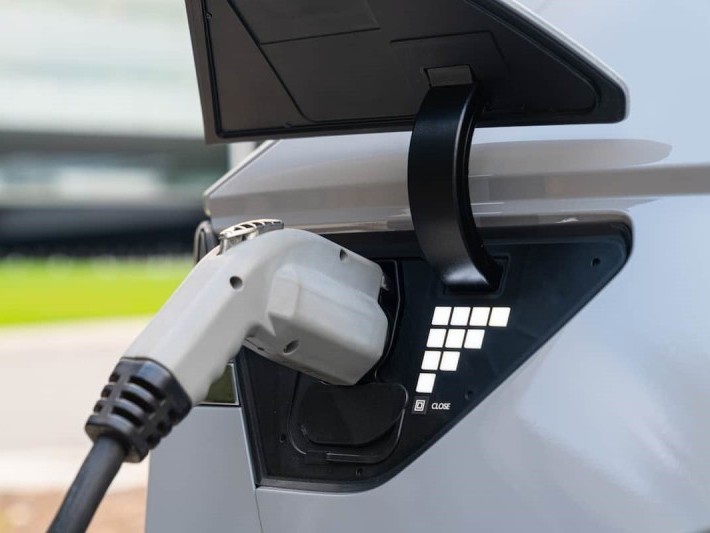
580,000 km & 87.7% Battery Health: Ioniq 5’s Incredible Durability
MichaelMay 6, 2025

Revolutionizing Hybrids: Hyundai’s New System vs. Toyota's Hybrid System
Kevin WongApr 22, 2025
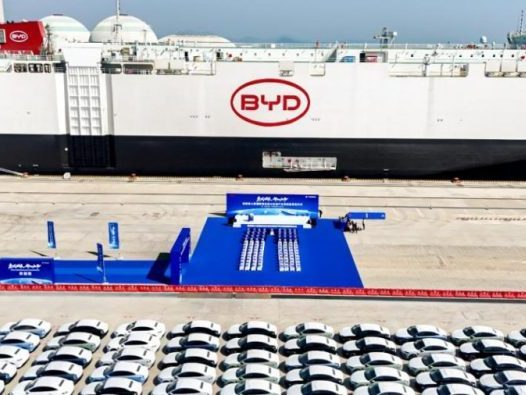
BYD Sets Global Sales Target of 5.5 Million Units for 2025
RobertMar 26, 2025
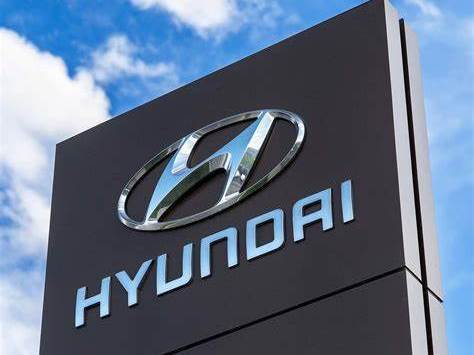
Hyundai is to launch an all-solid-state EV battery production line, but who's leading?
MichaelFeb 12, 2025
View More





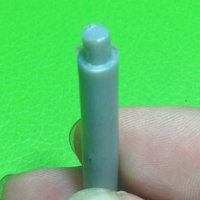
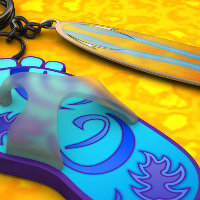




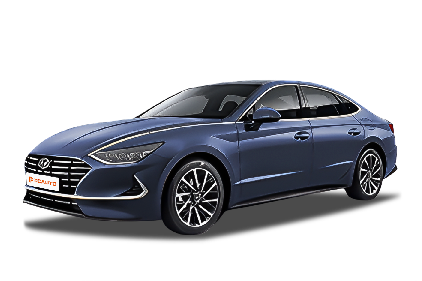





Pros
Cons